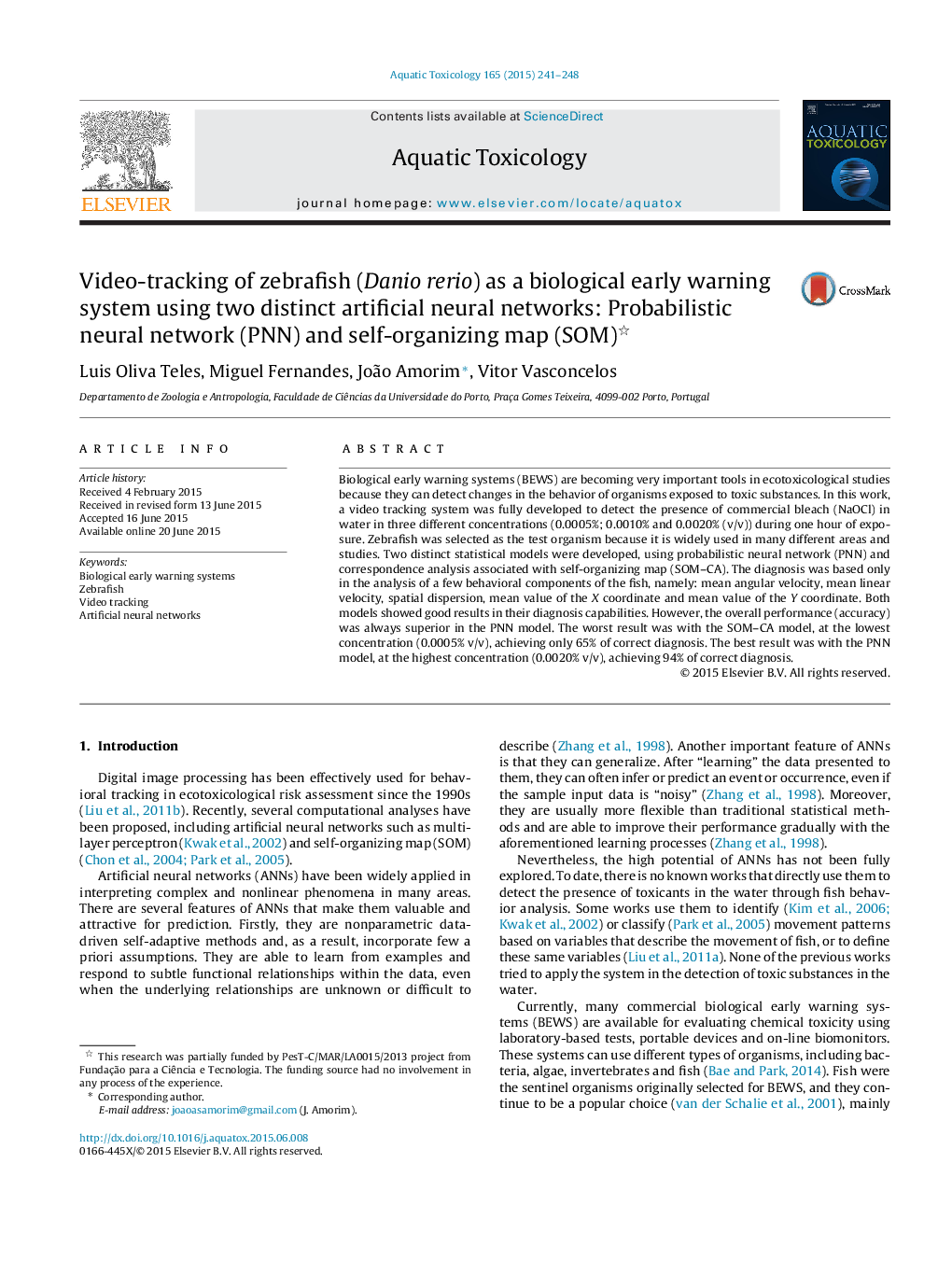| Article ID | Journal | Published Year | Pages | File Type |
|---|---|---|---|---|
| 4529030 | Aquatic Toxicology | 2015 | 8 Pages |
•The artificial neural networks were successfully used to detect sodium hypochlorite.•All concentrations of sodium hypochlorite tested were detected, by both models.•The probabilistic neural network had a better overall performance.
Biological early warning systems (BEWS) are becoming very important tools in ecotoxicological studies because they can detect changes in the behavior of organisms exposed to toxic substances. In this work, a video tracking system was fully developed to detect the presence of commercial bleach (NaOCl) in water in three different concentrations (0.0005%; 0.0010% and 0.0020% (v/v)) during one hour of exposure. Zebrafish was selected as the test organism because it is widely used in many different areas and studies. Two distinct statistical models were developed, using probabilistic neural network (PNN) and correspondence analysis associated with self-organizing map (SOM–CA). The diagnosis was based only in the analysis of a few behavioral components of the fish, namely: mean angular velocity, mean linear velocity, spatial dispersion, mean value of the X coordinate and mean value of the Y coordinate. Both models showed good results in their diagnosis capabilities. However, the overall performance (accuracy) was always superior in the PNN model. The worst result was with the SOM–CA model, at the lowest concentration (0.0005% v/v), achieving only 65% of correct diagnosis. The best result was with the PNN model, at the highest concentration (0.0020% v/v), achieving 94% of correct diagnosis.
